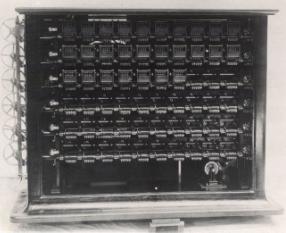History
Data Collection
View Larger
Tabulating Machine from the Early 20th Century
The first several decennial censuses were very basic. Enumerators only asked a handful of demographic questions, processing and tabulating questionnaires occurred at a local level, and publications were relatively limited. But as the country grew, and policy and business leaders began to recognize the value of census data, questionnaires became longer and tabulation necessarily became more involved.
As the science of statistics advanced, the Census Bureau changed and updated its methodology. The most noteworthy change occurred in 1940, when the Census Bureau introduced statistical sampling in a population census. There have, however, been other important methodological advances, especially in the fields of industrial classification and enumeration.
The upcoming 2010 census will see the most dramatic shift in the Census Bureau's data collection process in decades. The successful launch of the American Community Survey, which is administered continuously throughout the decade, means that the long-form sample questionnaire will no longer be used in the census itself.
As the United States continues to change, the Census Bureau continues to change along with it.


